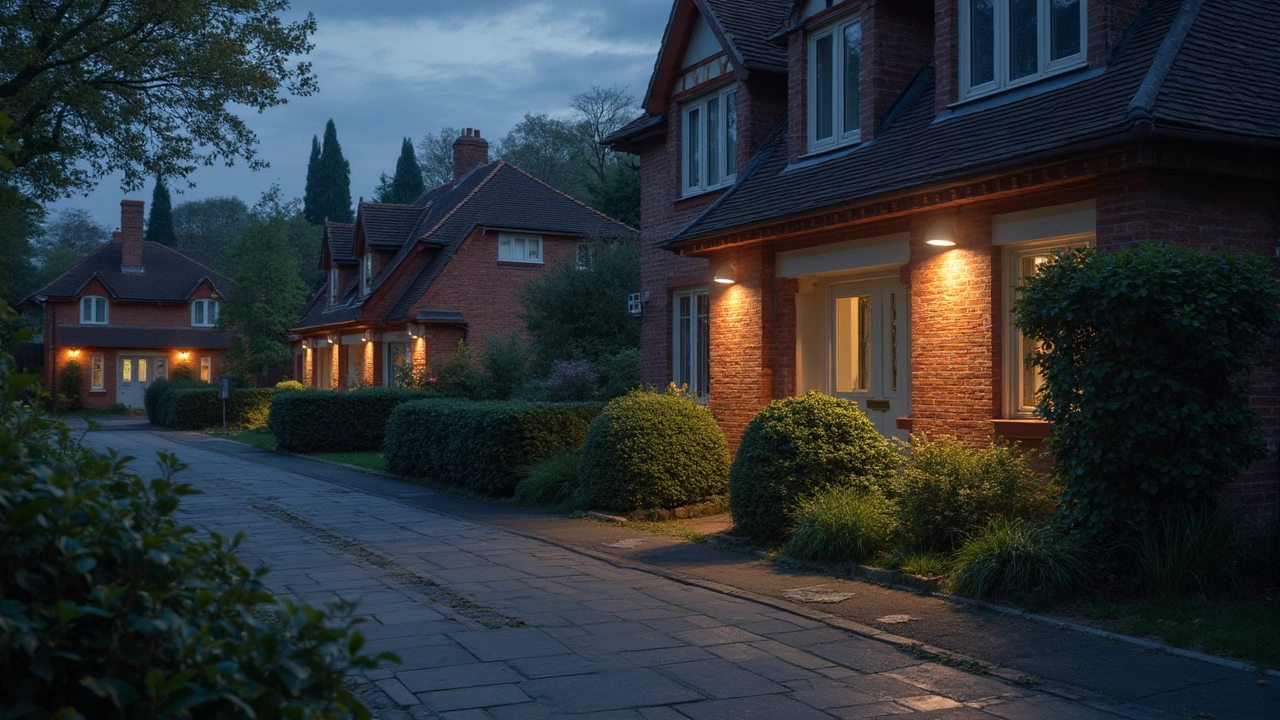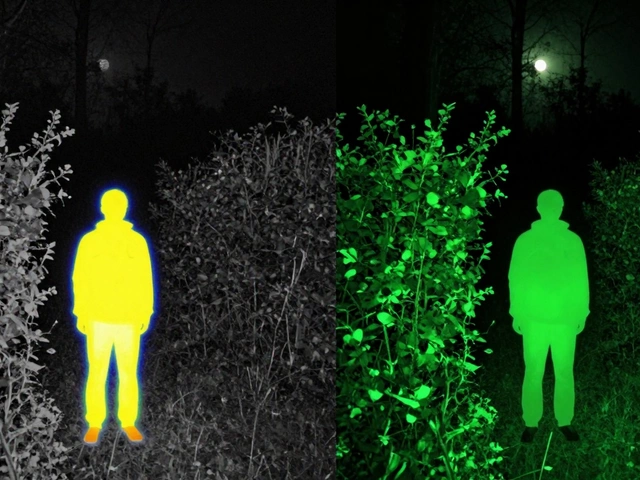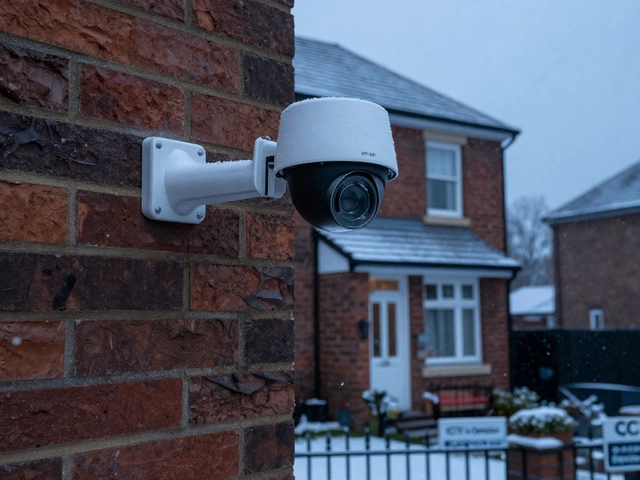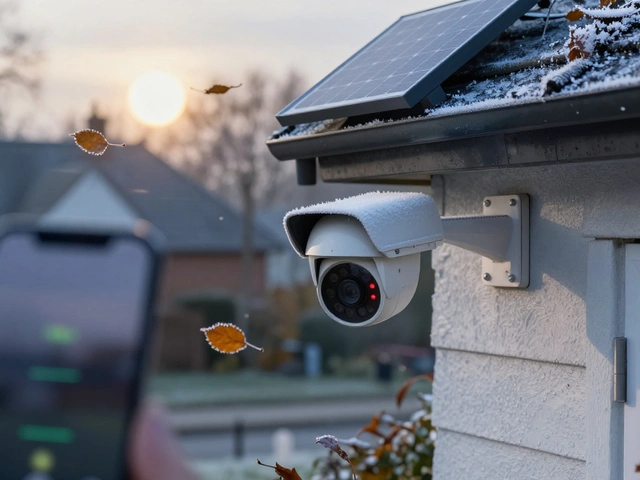We all know the importance of keeping our homes safe, but how bright should your outdoor security light be? You might be tempted to go for the brightest option, thinking it will offer the best protection. But hang on a second—not everything is as it seems. There's a sweet spot to hit when it comes to lighting up your home's exterior.
First things first, let’s talk lumens. Forget about watts when it comes to LED lights; lumens are what you should focus on. They measure brightness, not energy use. For general security purposes, something between 700 to 1300 lumens should do the trick nicely. But hey, don't go overboard—too much brightness can create glare and actually make it harder to see essential details.
Where you place these lights is just as important. Think about the most vulnerable parts of your property: dark corners, your front entrance, and near windows. You want to light up these areas without making your home look like a stadium during a night game. Placement can make or break your security setup, so take a good hard look at where lights can do the most good.
- Understanding Lumens and Brightness
- Placement Matters: Where to Install
- The Balance: Brightness vs. Energy Use
- Avoiding Common Mistakes
- Additional Tips for Effective Lighting
Understanding Lumens and Brightness
So, you've decided it's time to beef up your home security with some outdoor security lights. But how to measure how bright they should be? Spoiler alert: It’s all about lumens, not watts.
Let's dive into what lumens are. Simply put, lumens measure the amount of light output. Think of them as a way to tell how "bright" a light is going to be. Unlike watts, which measure energy consumption, lumens give you a clear picture of the actual light you'll get. For instance, a traditional incandescent bulb uses about 60 watts to produce roughly 800 lumens. When it comes to LEDs, you’ll get the same brightness at about 8-10 watts.
To put this in perspective: For an inviting porch light, somewhere around 100-200 lumens will do. If you want serious floodlights, consider 700-1300 lumens. Let's delve into a real-life example—think about a small driveway. If it's, say, 20 feet wide and needs decent visibility, you'll likely need about 1600 lumens in total, spread across several lights.
Before you dash out to buy those lights, consider the environment too. You don’t want to contribute to light pollution or make your neighbors grumble. Always check local regulations, as some areas have rules on how intense your outdoor lights can be.
How to Choose the Right Brightness
- Task Lighting: For areas like the main entrance, aim for 200-400 lumens. This balances visibility and energy efficiency.
- Security Lighting: Go for higher lumens here, 700-1300 is usually ideal to light up potential blind spots.
- Accent Lighting: Got a nice garden? 100-200 lumens is enough to highlight features without overpowering your landscape.
Pretty simple, right? Focus on the lumens for brightness, and consider placement for safety. It's not always the brighter, the better. Think about the atmosphere you want to create and how to efficiently use your lights for security.
Placement Matters: Where to Install
Positioning your outdoor security lights isn't just a set-and-forget task. It can greatly affect their effectiveness in keeping your home safe. Before buying lights, take a stroll around your property at night to figure out where it's the gloomiest or most vulnerable.
Prioritize Key Areas
Start with your home's main entry points—front and back doors, garage entrances, and windows. Placing lights here can deter potential intruders. You might also want to focus on any paths or stairs leading to these areas to prevent accidents for you and your guests.
- Front Door: A light here ensures visitors can identify themselves clearly when seen through a door camera.
- Backyard: This area can often be neglected but is a common entry point for intruders. A motion-activated light could be your best bet here.
- Side Yards: These narrow areas are often shadowy, making them sneaky spots for unwanted visitors. Proper lighting will eliminate those dark corners.
Avoiding Over-lighting
While it might seem like the more light, the better, it's crucial not to overdo it. Excessive lighting can create glare, blinding you as well as your security cameras, which defeats the whole point. It's all about balance—enough to see an approaching figure, but not so much that it feels like daylight.
Height and Angles
Consider the height and angle of installation. Too low, and someone could easily tamper with them. Too high, and they may not effectively light the area. Generally, fixing them 2.5 to 3 meters above ground should strike the right balance. Aim the lights slightly downward for the best illumination.
Ultimately, the goal is to have a combination of effectively placed lights that work together to cover all aspects of your home's exterior. And remember, no setup is permanent. Stay flexible and adjust your lighting placements as needed to maintain optimal coverage.

The Balance: Brightness vs. Energy Use
Choosing the brightness of your outdoor security lights isn't just about how it looks; it's also about how much it costs. Striking the right balance between brightness and energy use can save you some serious cash in the long run. But how do you do it?
Understanding LED Efficiency
First off, let's talk LED lights. They're kind of like the superheroes of outdoor lighting. Why? Because they give you way more lumens for every watt of electricity. For example, a 10-watt LED bulb can produce as much light as a 60-watt incandescent bulb. That's a huge difference!
Why More Isn't Always Better
It's tempting to think brighter lights mean better security, but that's not always true. Overly bright lights can waste energy and annoy your neighbors, and they might even create dark shadows where intruders could hide. Instead, opt for moderate, well-placed lighting that covers all vulnerable spots without turning night into day.
Energy-Saving Tips
- Motion Sensors: Install lights with motion sensors to conserve energy. They'll only turn on when something moves, which also surprises potential intruders.
- Timers: Use timers to control when your lights go on and off. Tailor the schedule to your family’s routine and local sunset times.
- Solar-Powered Options: Consider solar lights for an eco-friendly and effective alternative. They charge during the day and light up automatically at night without increasing your electric bill.
So now you know, home safety doesn’t mean glossing over your electricity bills. By focusing on smart and efficient lighting options, you can enjoy a well-lit home that doesn't break the bank.
Avoiding Common Mistakes
When it comes to outdoor security lights, a few common missteps often lead people astray. Getting these right can make all the difference between a safe home and one that's accidentally compromising your safety.
Too Bright or Too Dim
One of the most frequent mistakes is selecting lights that are too bright. You might think, "Hey, brighter is better!" but it can actually make things worse. A glaring light can blind you with reflections and shadows, causing you to miss important details. Stick to the sweet spot – around 700 to 1300 lumens is usually enough.
On the flip side, going too dim can leave you in the dark. Make sure your lights are powerful enough to cover the needed area effectively.
Poor Placement
Placing lights in the wrong spots is another error. You need your lights to cover entry points and dark spots that burglars might use to sneak in. Don't just slap a light haphazardly—spend some time thinking about areas where outdoor security lights can provide the most coverage without shining directly into your neighbor's bedroom.
Ignoring Energy Efficiency
It's easy to overlook energy efficiency when you're focused on security. But inefficient lighting can rack up your electricity bills. Look for LED lighting as they're generally more energy-efficient and last longer. You'll thank yourself when the power bill arrives.
Not Using Motion Sensors
Motion sensors are another game-changer. They save energy and reduce light pollution by only turning on when something moves nearby—an extra layer of strategy for your home security.
Trouble with Timing
If your lights are on all night, they can attract unwanted attention—or just sky-high energy bills. Consider using timers to control when your lights are active. Set them to turn on at dusk and off at dawn or during specific times when you need them the most.
Beware of these pitfalls and keep your home safety efforts on point—because who wants to learn the hard way?
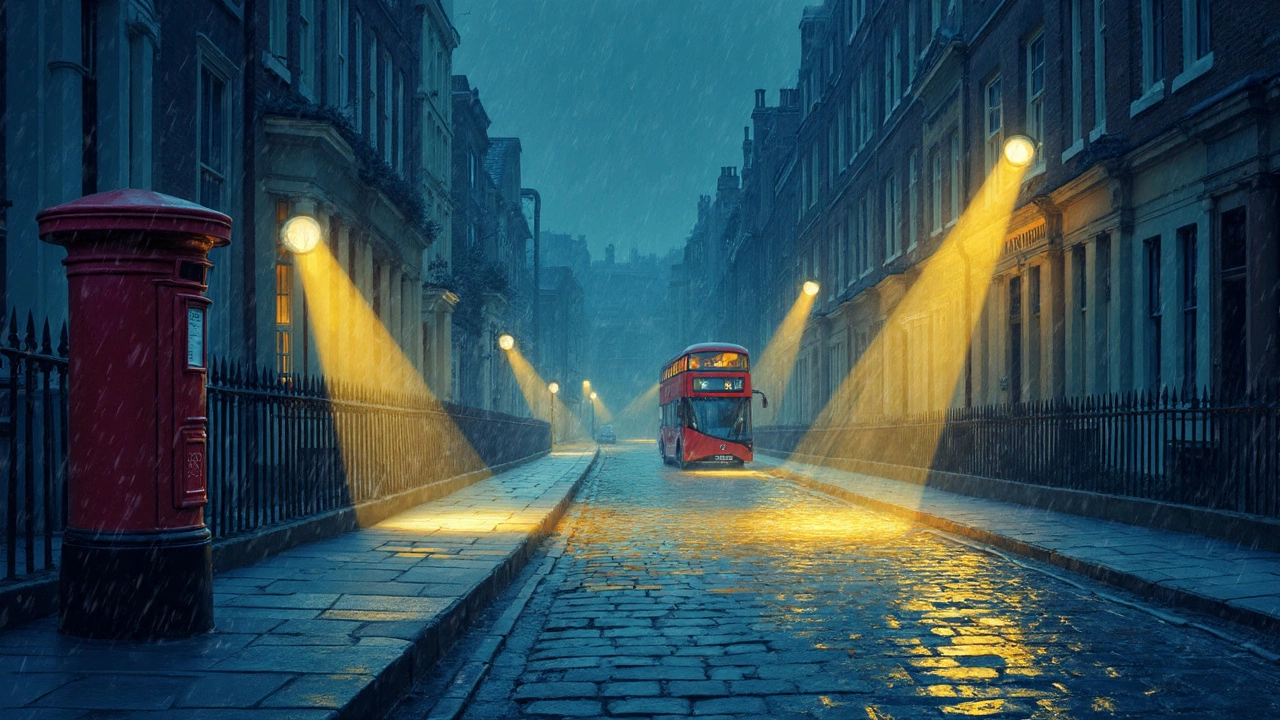
Additional Tips for Effective Lighting
So, you've got the outdoor security lights installed and you're feeling pretty good about it. But there's always room to up your game when it comes to home safety. Here are some more tips to make the most of your lighting setup.
Consider Motion Sensors
Adding motion sensors to your lights can be a game-changer. They don't just save energy; they alert you to any unexpected movement. Imagine this: instead of keeping the lights blazing all night, you only light up when something's happening. It's smart and effective.
Don’t Forget About Smart Lighting
Technology's come a long way, and smart lighting systems can be your new best friend. Use an app on your phone to control your lights, adjust brightness, and set schedules—no more fumbling around at night or wasting electricity when you don’t need it.
Mix It Up with Different Light Sources
Variety is key. Combine floodlights with pathway markers or wall sconces. This not only enhances your home’s aesthetic but also eliminates shadowy corners. Mixing types of lighting ensures full coverage.
Regular Maintenance Is Key
Keep an eye on your lights now and again. A quick clean can make a difference since dirt and debris can dim even the best bulbs. Replace any damaged lights promptly to keep security tight.
- Regularly check for blown bulbs or damaged wiring.
- Clean fixtures to ensure maximum brightness.
- Test sensors and timers to make sure they’re working properly.
Be Mindful of Your Neighbors
No one likes a good night's sleep interrupted by someone else's lamps. Aim your lights downward or use shields to avoid 'light trespassing' into a neighbor's windows. You'll keep the peace while keeping safe.
To wrap it up, a well-thought-out lighting plan isn't just about how many lumens you’ve got. It's about being clever with placement, technology, and maintenance. Follow these tips, and your home security setup will be shining bright and keeping you safe.

